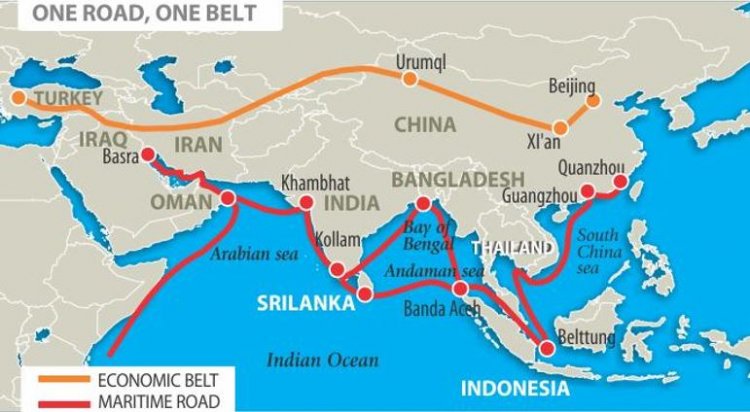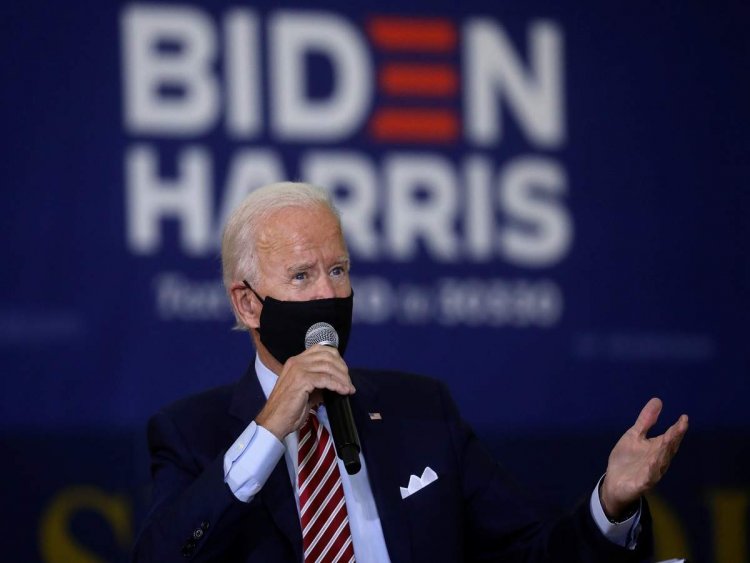Indo-Pacific Asia
Joe Biden and India? what if? India should not let the Indo-Pacific concept turn into a US-led concept directed against China, it has more long-term potential to become a strong regional economic alliance that will promote prosperity and peace in the region. Thus, rather than focusing on China’s containment, the focus of the Indo Pacific initiative should be on connectivity, enhancing maritime security, counterterrorism, non-proliferation, and cyber issues.
Central Indo-Pacific
The Indo-Pacific, sometimes known as the Indo - West Pacific or Indo-Pacific Asia,
is a biogeographic region of Earth's seas, comprising the tropical waters of the Indian Ocean, the western and central Pacific Ocean, and the seas connecting the two in the general area of Indonesia. It does not include the temperate and polar regions of the Indian and Pacific oceans, nor the Tropical Eastern Pacific, along the Pacific coast of the Americas, which is also a distinct marine realm. The term is especially useful in marine biology, ichthyology, and similar fields, since many marine habitats are continuously connected from Madagascar to Japan and Oceania, and a number of species occur over that range but are not found in the Atlantic Ocean. The region has an exceptionally high species richness, including 3000 species of fish, compared with around 1200 in the next richest marine region, the Western Atlantic, and around 500 species of reef-building corals, compared with about 50 species in the Western Atlantic.
The WWF and Nature Conservancy divide the Indo-Pacific into three realms (or sub realms), and each of these into a number of marine provinces.
Central Indo-Pacific
The Central Indo-Pacific includes the numerous seas and straits connecting the Indian and Pacific oceans, including the seas surrounding the Indonesian archipelago (with the exception of Sumatra's northwest coast, which is part of the Western Indo-Pacific), the South China Sea, the Philippine Sea, the north coast of Australia, and the seas surrounding New Guinea, western and central Micronesia, New Caledonia, the Solomon Islands, Vanuatu, Fiji, and Tonga. The Central Indo-Pacific, due in part to its central location at the meeting of two oceans, has the greatest diversity of corals and mangroves.
Eastern Indo-Pacific
The Eastern Indo-Pacific surrounds the mostly volcanic islands of the central Pacific Ocean, extending from the Marshall Islands through central and southeastern Polynesia to Easter Island and Hawaii.
Western Indo-Pacific
The Western Indo-Pacific covers the western and central portion of the Indian Ocean, including Africa's east coast, the Red Sea, Gulf of Aden, Persian Gulf, Arabian Sea, Bay of Bengal, and the Andaman Sea, as well as the coastal waters surrounding Madagascar, the Seychelles, Comoros, Mascarene Islands, Maldives, and the Chagos Archipelago.
With the rise of China and its efforts to dominate the region, the term has found its way into official documents such as national security strategies or defence white papers as well as into the rhetoric of the elite countries.
- In 2007 the term found mention in the speech of Japanese Prime Minister Shinzo Abe in Delhi, where he called the Indian and Pacific Oceans as one common space.
- In 2011, the term found mention in the speech Hillary Clinton, the then US Secretary of State, in the context of US ‘Pivot to Asia’, but not found mention in official documents.
- In 2016, Japanese PM Shinzo Abe, declared his Free and Open Indo-Pacific strategy, to be the core of Japan’s foreign policy doctrine.
- In November 2017, US President presented his “vision” of a Free and Open Indo-Pacific (FOIP) at the Asia-Pacific Economic Cooperation (APEC) summit. Since then the term “FOIP” has been enshrined in official documents of the US.
- In 2018, French President Emanuel Macron speaks about France’s strategy for the Indo-Pacific.
- In June 2018, India’s PM Modi presented India’s concept of the Indo-Pacific region at Shangri-La dialogue.
- Although the geographical definition of the Indo-Pacific region is a bit different for these countries, all countries are on common ground with reference to the importance of a rules-based international order.
Different things to different people.
The divergences involve, among other things, the extension of the Indo-Pacific as a geographical area, the objectives associated with each respective concept, the focus on or weighting of different policy fields within each respective concept, the question of China’s inclusion or exclusion.
what is the Importance of the Indo-Pacific region?
Growing Importance of India: The popularity of the term Indo-Pacific over Asia-Pacific reflects the growing importance of India for the western developed countries in the region.
Maritime advantage against China: It can be considered a reaction to the militarization of waters in the Indo-Pacific, the South China Sea (SCS) in particular, and the growing heft of the Chinese economy across Asia and Africa.
For India, growing maritime power in the Indo-Pacific region will provide it with a new weapon against China’s misadventures on India’s borders.
International Trade: The Indo-Pacific ocean system carries an estimated 65 per cent of world trade and contributes 60 per cent of global GDP. Ninety per cent of India’s international trade travels on its waters.
The two-third container trade of the world passes through this region. The economies of many countries are dependent upon the Indo-Pacific sea routes for their trade and energy supply.
Many western countries including the US are concerned due to shifting in the economic trajectory from the Atlantic to the Indo-Pacific and the rise of China has added to it.
That is why a country like Germany, physically distant but an economic stakeholder in the Indo-Pacific, has released a strategy for the region. After France and the Netherlands, it is the third European country to do so.
Natural Resources: Maritime territories have emerged as depositories of vital resources ranging from fish stocks to minerals and offshore oil and gas. The South China Sea, for instance, is estimated to hold some 10% of the global fish resources as well as 11 billion barrels of oil and 190 trillion cubic feet of gas.
Challenges for India
Definition of the concept: While the Indo-Pacific construct is the US-led maritime initiative and is yet to find the right direction amongst its partners, government change in the US, might prove fatal to this initiative.
US concept of the Indo-Pacific region is not at all inclusive, unlike India. US concept is based on its regional rivalry with China, whereas India won’t like to present this concept as a mere China-centric, as clarified in its Indo-Pacific vision.
It has actually been taken to heart by China which, in the meantime, has extended its naval footprint from Djibouti at the western extremity of the Indian Ocean where it has established a base to the eastern extreme of the western Pacific where it stakes a claim to the land and sea features.
India’s weak economic presence: For a politico-economic construct such as the Indo-Pacific to survive, there must be strong economic partnerships and linkages among its members. Merely focusing on strategic talk and possible military cooperation will not work because, at some point, the unavoidable economic logic will kick in.
India’s economic engagements with the countries of the Indo-Pacific region remained insufficient due to domestic political considerations. Exiting from RCEP is one such example. On the other side, China has major economic relations with all the states except the US.
India’s role in the Indo-Pacific will remain limited if it does not prove to be a major economic partner to the States in the region.
China’s defense partnership: China has become a major defence supplier to several of the region’s states including Bangladesh, Myanmar, Sri Lanka, Indonesia, Malaysia, the Philippines, and Thailand
What's Your Reaction?










































































